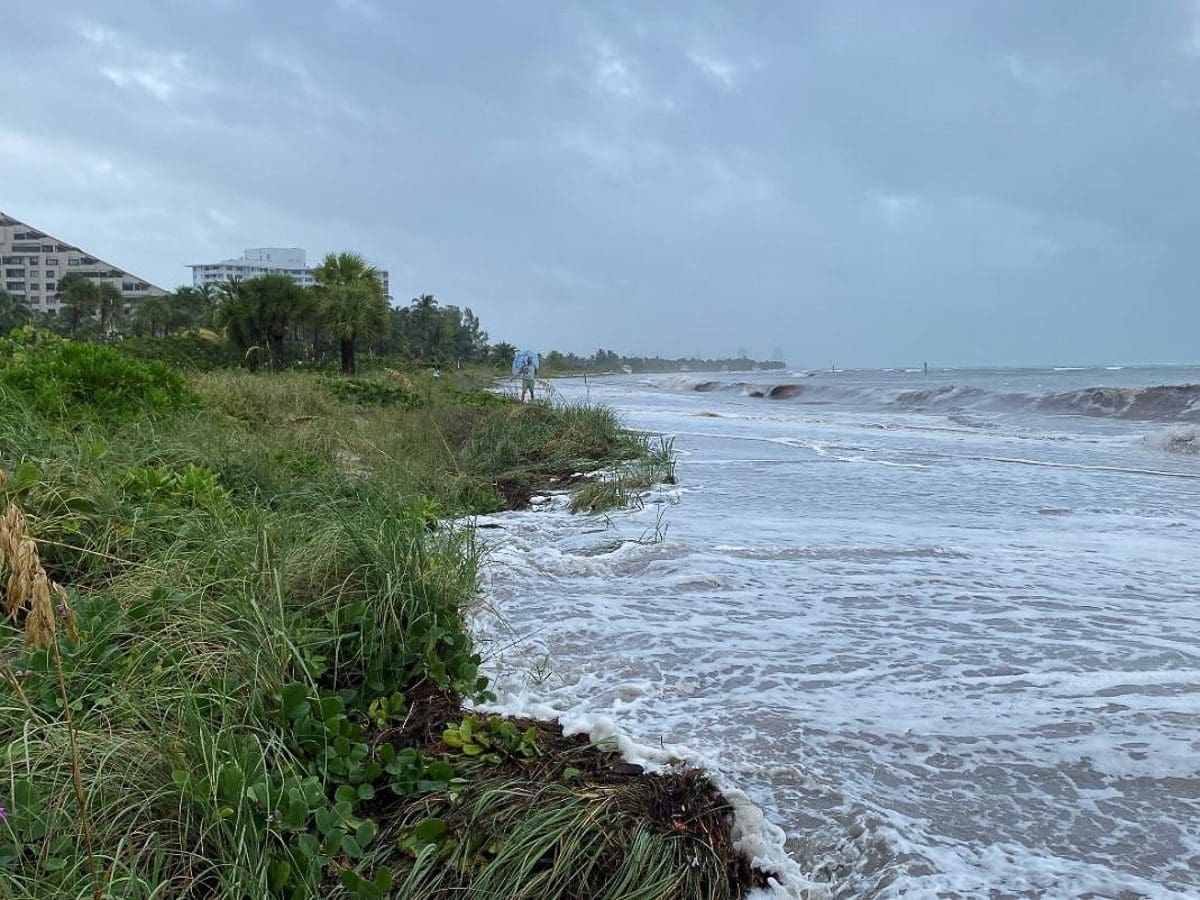Miami-Dade County will look to Key Biscayne as a trailblazer for its Back Bay study, the plan to fortify the coastline against storm surge from hurricanes.
Officials with the Army Corps of Engineers and the County – including Mayor Daniella Levine Cava – held an online town hall Wednesday after the mayor announced a deal had been reached to restart the study.
The Village of Key Biscayne was a special guest at the Zoom session – because it’s the subject of a parallel study looking at solutions to storm surge.
“The work at the Village of Key Biscayne is really a microcosm of what we’ve been talking about across the entire landscape,” said Jim Murley, the chief resilience officer for Miami-Dade County.
“It’s all captured in this project that will parallel starting at the same time as the work we’re doing.”
The problem of storm surge from hurricanes is separate from other issues facing the coastline of the county and the island: beach renourishment, stormwater flooding, and groundwater flooding.
Key Biscayne is seeking to address some of these issues with its resilient island initiative, which last week saw the price estimate increase to $310 million.
Invest in Local News for Your Town. Your Gift is tax-deductible
Roland Samimy, chief resilience officer for the Village, said that five years ago good progress was being made with the Corps and County on the ocean side of the island with a dune system and tide back walls.
But then, he said, “we reached this little hiccup” where it became apparent the protective benefits from the ocean-side solutions were negated from storm surge inundation from the Bay side.
“Through the hard work of a lot of folks at the Corps and the County and ourselves, we were able to essentially petition to get included into a Back Bay feasibility study to ultimately come up with a complete whole island shoreline protection solution,” Samimy said.
And now the County is looking at Key Biscayne as a test bed.
“It was really a wise move to decide that we should proceed on a parallel track,” Samimy said.
Key Biscayne will share a portion of the $3 million cost with the County and with Corps – spending about $750,000 from Village’s coffers, Samimy said.
The County study will cost $7 million and take four years to complete.
The resumption of work with the Corps comes after the County rejected the the initial $5 billion plan. That draft called for installing massive flood walls and gates to protect Miami from storm surge – a concept derided by environmentalists and homeowners alike.
The new study will look at using planting mangroves, reinforcing dune systems and artificial reefs.
“Those are all things that would be envisioned for Key Biscayne because everything that the County is interested in – in terms of engineering with nature and nature-based solutions – are all the same sort of things that we would be interested in,” Samimy said.
“We are in a better position now than we were a year ago,” said Audrey Siu, policy director at the non-profit Miami Waterkeeper.
“In the latest plan, we’re pleased to see a range of measures instead of a wall along the shores of Biscayne Bay. They’ve included things like living shorelines and living seawalls as plan alternatives.”
At the town hall, there was still talk of erecting gates and walls to protect the coast that is right on the Atlantic Ocean – but officials said the “Atlantic coastline alternative” remains aspirational at best.
Storm surge remains an existential threat. Residents only need to review the videos of the raging ocean barrelling down the streets of Fort Myers Beach last year during Hurricane Ian to see the destruction storm surge can do.
Mayor Levine Cava said that the level of cooperation with the Corps after the initial plan was rejected has been pivotal.
“We must always be ready to act swiftly to protect life and property in the face of this more extreme weather that is coming at us with great frequency,” she said.
JOHN PACENTI is the executive editor of the Key Biscayne Independent. John has worked for The Associated Press, the Palm Beach Post, Daily Business Review, and WPTV-TV.



